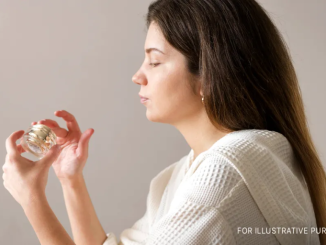
If you cut a watermelon and it looks like this, throw it away immediately
Melons are the most consumed seasonal fruits. Being adored by both children and adults, melons are even recommended during the summer, containing a lot of water and hydrating the body.
That is why it is important to know some important aspects before buying a watermelon, especially since we cannot see if it is perfect without cutting it.
Some of the most important factors are related to the shape, appearance, and color of the tail. First, watermelon must be heavy. When you pick it up and find it harder than it initially seemed, then watermelon is good.
Pay attention to the melon spot. This stain indicates whether the watermelon is ripe or not. So look for the yellow spot on the opposite side of the tail. If that stain is green or white, then the watermelon is not ripe enough. In addition, the shell must be glossy.
Also in order to make sure that the watermelon is ripe, you can tap it with your fingers. If it sounds empty, then the feathers are just right to eat. Also, look for watermelons in a round or oval shape, avoiding those with an asymmetrical shape!
Why not eat cracked melons in the middle
Every family tries to include healthy fruits and vegetables in their diet. That is why it is important to know how to distinguish those grown naturally from those grown with the help of chemical fertilizers.
Many farmers are trying to speed up the growth of melons with the help of accelerators. One of the signs of synthetically grown melons is the crack in the middle of the core.
If the watermelon has such a crack, then chemical fertilizers are used in its growth.
The benefits of eating watermelon
Not only the fruit of the watermelon but also its seeds are very nutritious for the body. So do not throw away the seeds of watermelons, they contain a lot of nutrients. In 150 grams of dried seeds, we find 30.6 grams of protein, representing 61% of the recommended daily value.
Thus, seed proteins contain essential amino acids, such as tryptophan, glutamic acid, and lysine. In addition, we also find arginine, which has the property of regulating blood pressure and relieving the suffering of small arteries.
In watermelon seeds, we also find niacin, a B vitamin, extremely necessary for the maintenance of the nervous system, digestive system, and skin elasticity. Also in the seeds, we find vitamins such as thiamine, riboflavin, vitamin B6, and pantothenic acid.
Another benefit of consuming watermelon seeds is the intake of minerals such as magnesium, phosphorus, iron, potassium, sodium, copper, manganese, and zinc, helping muscles and joints.
As for the melon core, it contains extremely little fat and cholesterol. With the help of citrulline (found especially in the peel), the elimination of ammonia from the liver is favored. Citrulline also reduces oxidative stress, dilates blood vessels, and gives us extra energy.
The melon core also contains vitamins A, C, D, E, B6, and B12, pantothenic acid, iron, calcium, magnesium, potassium, phosphorus, zinc, and selenium. Vitamins, along with antioxidants, help strengthen the immune system, and prevent heart disease, joint inflammation, and even certain types of cancer – colorectal, prostate, breast, or cervical.
Watermelon is richer in lycopene than tomatoes, being a powerful antioxidant that lowers bad cholesterol, and prevents cardiovascular disease, cataracts, and osteoporosis.



Leave a Reply